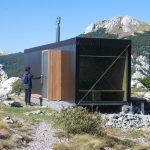As Poslovni Dnevnik writes on the 8th of April, 2019, the Cerovac caves are some of the most interesting geomorphological attractions nature has to offer in Croatia, and the caves were originally set up for visitors back in 1951.
The ”Cerovac caves” centre of excellence deals with the sustainable management of natural heritage and karst underground, and this new tourist project should be able to get completely off the ground in two to three years, writes Večernji list.
The Cerovac cave project is being carried by the the Velebit Nature Park public institution (JUPP Velebit) and the project’s partners, which include the Zagreb Speleological Association, Zadar County and the public institution for the protection of nature of Zadar County, Natura Jadera.
”The total value of the project stands at 68.5 million kuna, out of which approximately 53 million kuna of non-refundable money is being granted by EU funds, and the rest of the money, along with that of the project’s partners, will be provided by the Ministry of Environmental Protection and Energy and the Environmental Protection Fund,” stated the president of the Zagreb Speleological Association and historian Stipe Tutiš, who was immediately followed by architect Roman Šilje, who went on to explain the meaning behind and the ultimate goal of the whole project.
”In southeastern Velebit, in Crnopac just above Gračac, the largest natural speleological sight in the Dinaric karst, the Cerovac caves, can be found. So far, only the ipper and lower Cerovac caves were visible and accessible, but owing to the passage of time and to the Homeland War, they remained neglected. Therefore, Croatian speleologists, as the initiators of this project, have begun with all of their other partners to return to this unique karst phenomenon and give it the importance it deserves, so, back in 2010, we started with the development of this project. Five years later, the project documentation got started, which was funded by the Environmental Protection and Energy Efficiency Fund.
In October 2016, the project was submitted to the Operational Program for Competitiveness and Cohesion 2014-2020. The evaluation lasted from October 2016 to April last year, and on April the 4th, 2018, around one year ago, an agreement was signed with the Ministry of Regional Development and EU Funds,” concluded Šilje.
Make sure to follow our dedicated lifestyle page for more information on current projects in Croatia and much more.








